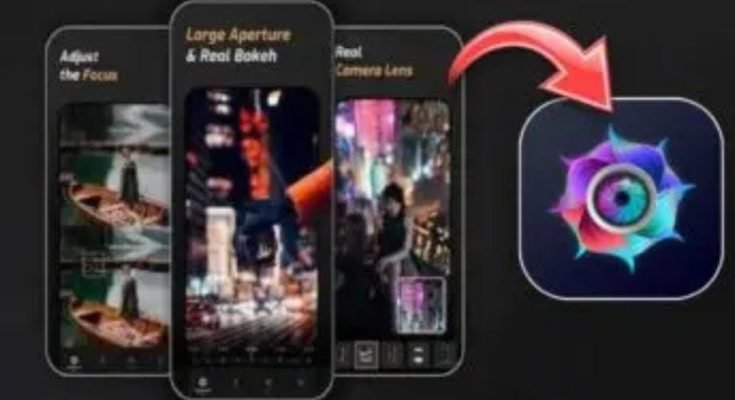Photography isn’t just about clicking a button — it’s about controlling the light, movement, focus, and mood of a moment. And when it comes to true control, DSLR (Digital Single-Lens Reflex) cameras are unmatched. What sets DSLRs apart from basic smartphone cameras or point-and-shoot devices is their manual control settings. These settings allow photographers — from hobbyists to professionals — to tweak each aspect of the shot to create a masterpiece.
Understanding manual controls is like learning to drive a car manually — it may seem complex at first, but once you master it, you’ll never want to go back to automatic. Let’s explore how these controls work, what features they offer, and how they can enhance your photography game.
What are How DSLR Pro Camera Manual Controls Work?
To put it simply, manual controls in a DSLR give you complete authority over your camera’s behavior, instead of letting the camera decide everything for you. In automatic mode, the camera tries to guess the best settings based on available light and subject. But with manual controls, you are the boss.
Manual control settings typically include:
Shutter Speed
Aperture (f-stop)
ISO
White Balance
Focus
Exposure Compensation
These settings work together to shape the final image. Think of it like cooking — you can follow a recipe (automatic mode), or you can mix your own ingredients (manual mode) for a custom flavor.
How DSLR Pro Camera Manual Controls Work
Let’s break down how each of these manual controls works:
1. Shutter Speed
This controls how long the camera sensor is exposed to light. A fast shutter speed (like 1/1000s) freezes action — great for sports or wildlife. A slow shutter speed (like 1/10s) creates motion blur — useful for artistic effects like flowing waterfalls.
2. Aperture (f-stop)
This is the size of the lens opening. A lower f-number (f/1.8) means a wider aperture, allowing more light and creating a shallow depth of field (background blur). A higher f-number (f/16) gives a deeper field, keeping more of the image in focus.
3. ISO
This controls the sensitivity of the camera sensor to light. A low ISO (100) is ideal in bright settings, producing clean images. A high ISO (3200+) helps in low light but can cause noise or grain in the image.
4. White Balance
This setting adjusts the color temperature to match the light source — daylight, tungsten, fluorescent, etc. Proper white balance keeps whites looking white instead of orange or blue.
5. Manual Focus
While autofocus is fast, manual focus gives precision, especially in low-light or macro photography where the camera may struggle.
6. Exposure Compensation
Even in semi-manual modes like Aperture Priority or Shutter Priority, exposure compensation lets you brighten or darken the image manually.
Features of How DSLR Pro Camera Manual Controls Work [Completely Detailing]
| Feature | Description |
|---|---|
| Full Manual (M) Mode | Total control over shutter speed, aperture, and ISO. |
| Aperture Priority (Av or A) | You choose the aperture; the camera selects shutter speed. |
| Shutter Priority (Tv or S) | You choose shutter speed; the camera picks the aperture. |
| Bulb Mode | Lets you hold the shutter open as long as needed — great for star trails and long exposure shots. |
| Live View Manual Adjustments | See exposure changes live on the screen before taking the photo. |
| Custom Presets | Save frequently used manual settings for specific types of photography. |
| Histogram Display | Helps judge if the exposure is balanced — useful in manual mode. |
| Manual White Balance | Adjust color tones with Kelvin temperature. |
| Manual Flash Control | Decide flash intensity and timing manually. |
Pros of How DSLR Pro Camera Manual Controls Work [Use Table]
| Pros | Details |
|---|---|
| Creative Freedom | Allows full artistic control over exposure, blur, lighting, and depth. |
| Professional Quality | Manual settings help capture high-quality, publish-ready images. |
| Better Low-Light Performance | Combine long exposure and wide aperture for amazing night shots. |
| Tailored to Situations | Adjust settings based on shooting conditions rather than relying on presets. |
| Learning & Skill Building | Teaches you how photography works, making you a more skilled photographer. |
Cons of How DSLR Pro Camera Manual Controls Work [Use Table]
| Cons | Details |
|---|---|
| Steep Learning Curve | Beginners may find it overwhelming at first. |
| Slower Shooting Process | Takes time to adjust settings for each shot. |
| Missed Moments | Fast action can be hard to catch without practice. |
| Requires Practice & Patience | Getting the perfect shot manually may take multiple tries. |
| Dependent on Knowledge | Incorrect settings can ruin a good photo opportunity. |
How DSLR Pro Camera Manual Controls Work Alternatives [Use Table]
| Alternative | Details |
|---|---|
| Smartphone Manual Apps (e.g., ProCam, Halide) | Turns your phone into a manual-mode camera. Great for on-the-go use. |
| Mirrorless Cameras with Manual Mode | Offer the same manual controls but in a compact, lighter body. |
| Bridge Cameras | Fixed-lens cameras with full manual controls — good mid-step before DSLRs. |
| Compact Cameras with Manual Mode | Some high-end point-and-shoots offer manual settings for flexibility. |
| Digital Rangefinder Cameras | Manual controls in a retro-style camera for purists and street photographers. |
How DSLR Pro Camera Manual Controls Work
To sum it all up: manual controls in a DSLR camera let you decide how your photo will turn out, rather than trusting the camera to do it for you. It’s like switching from auto-pilot to full control of a plane. While there’s a learning curve involved, the power it gives you is tremendous. Whether you’re shooting portraits with dreamy background blur or capturing lightning during a storm, manual settings are the key to unlocking professional photography.


